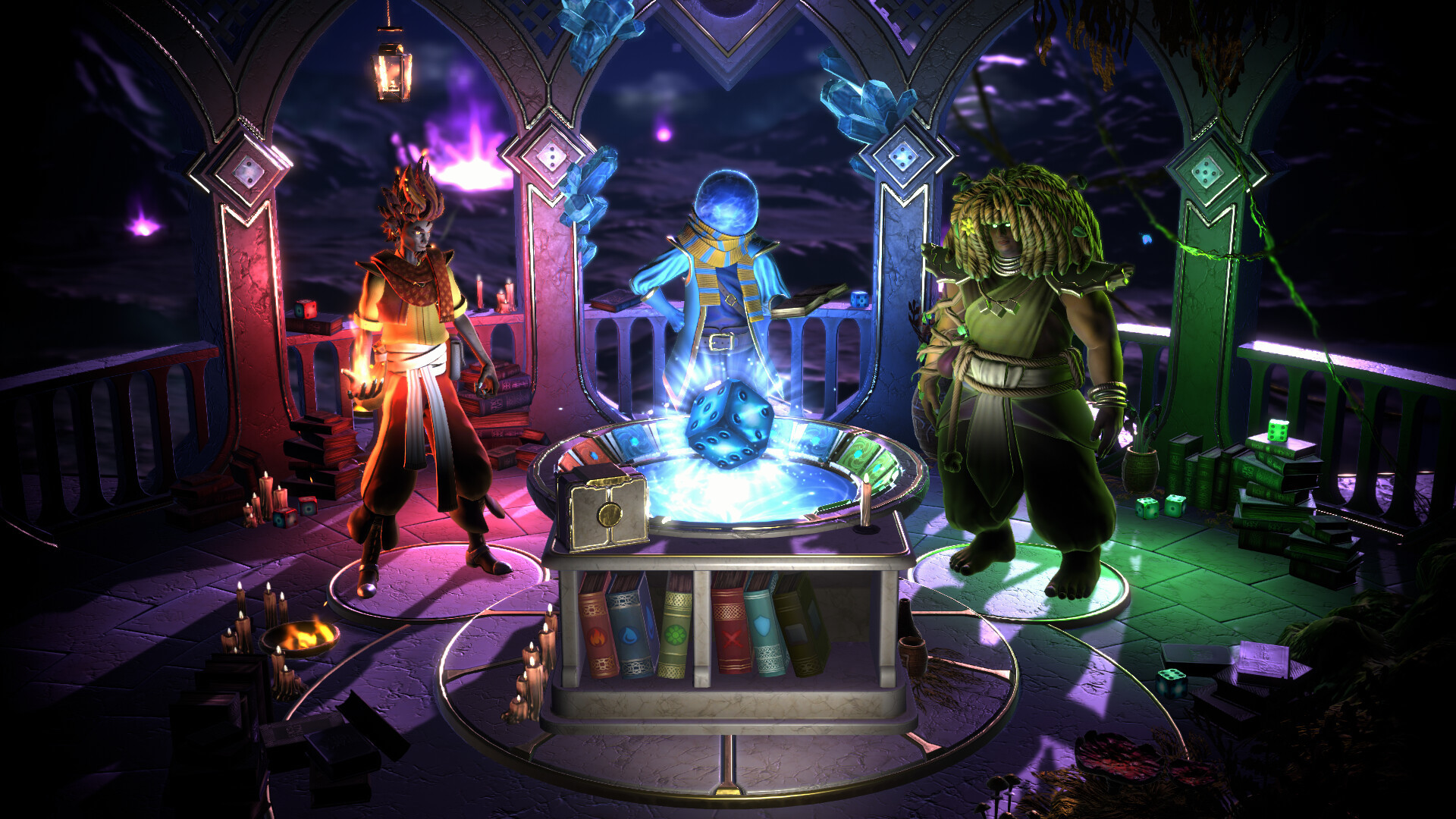SpellRogue: A Unique Blend of Strategy, Deck-building, and Dice Mechanics
When you hear the pitch of Guidelight Games’ SpellRogue, it’s easy to assume the game has too much going on at once. The turn-based strategy mixes deck-building and Rogue-like elements, all with random dice mechanics. On the surface, that’s a lot to digest, but in reality, SpellRogue is a very interesting and compelling project.
I say this because during my time at Gamescom this year, I had the opportunity to sit down and play the game for a little while. In that demo, I checked out a brief round of gameplay that lasted about 20 minutes, but could have lasted longer given the time and opportunity to continue my roguelike run.
When the game starts, the player chooses one of three magic-wielding characters. Each character is attuned to an element, whether it’s destructive fire, powerful water, or regenerative earth. The type you choose (I chose Lapis the Azure Seer) reflects how you should execute your strategy in the game, e.g. Lapis is all about combining cards and effects so that fewer dice rolls are more effective, but It all makes more sense when I dig into the rest of the mechanics.
Once in the game, deck building and dice mechanics come into play. The idea is that as you travel across a map, like Slay the Spire’s world map, you’ll encounter random encounters that might include battles, shops to buy cards and items, boss-level enemies, and more. Whenever you visit one of these areas (remember you can only go forward, so you have to think about the path you take before taking the first step) and complete the encounter, you will have the opportunity to add to your deck New passive abilities, or usable cards, that can be used in battle or used in conjunction with other cards to produce effects in battle.
As for how a card’s effects and damage are determined, this is when the dice mechanic comes into play, because you have a specific set of dice that you can roll each turn, and you have to decide how to spend those dice on your card, or risk At the risk of re-rolling the dice, hoping for a higher dice value. So, let’s say you roll a three, a six, and a four, you have to decide if you want to put the largest number on the shield, throw some damage, or put it in a card that needs a total of 10 to activate it Powerful effect. The choice is yours, and it all depends on how you build your deck for that moment and that encounter.
The part of SpellRogue that really caught my attention was how it had this depth, while still remaining very simple and intuitive to play. It has the charm of Slay the Spire while having a lot more depth in the way customization and build crafting are handled. I’d say SpellRogue would benefit from the extra content, as I’ve seen it’s full of potential, it doesn’t have that much substance, but with the game’s lack of a release date, the devs still have plenty of time to double down on the content and make it Stacked with activities and additional options.
